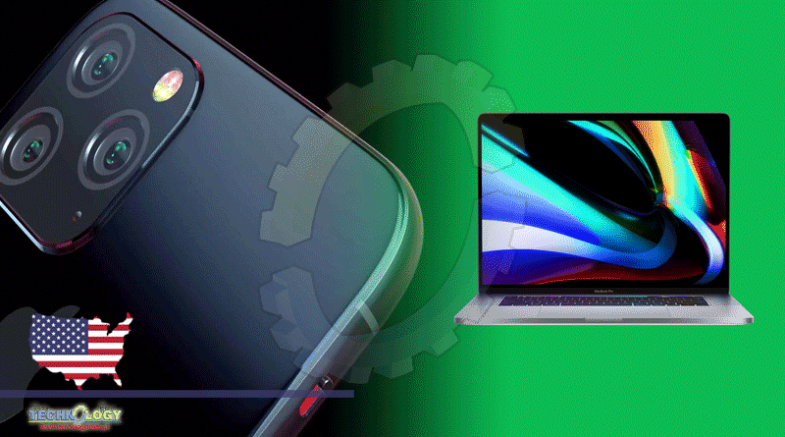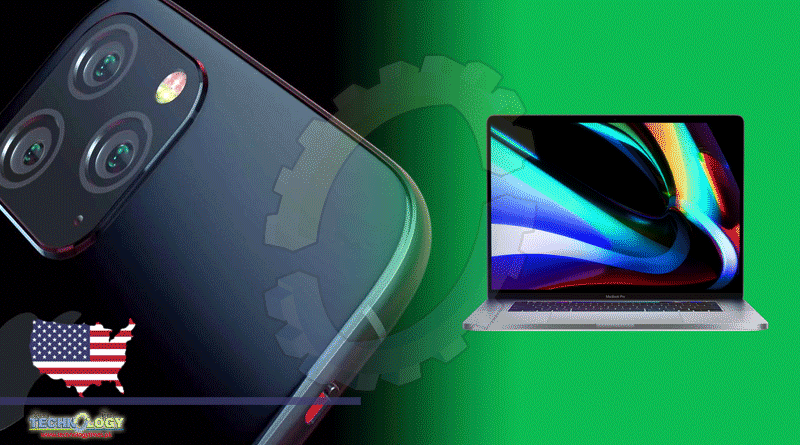Sony To Block Environmental Standards To Encourage Design Of Devices That Are Easier To Repair, Upgrade And Disassemble For Recycling

It’s the time of year when those who are lucky may find a shiny, new device under the tree, and others may snag one during Boxing Week sales. But too often, the shine comes off those new devices far sooner than we expect. Many of us are frustrated by how soon new high-tech devices like smartphones break or just don’t work as well anymore, forcing us to replace them — a concept sometimes called “planned obsolescence.”
But it doesn’t have to be that way. Advocates say not only is it possible for manufacturers to make longer-lasting, easier-to-repair devices, but it’s necessary on an Earth with limited resources. “I think people understand that they’re sort of locked into a racket with technology like phones and televisions and computers, where there’s no such thing as a device that you keep for a long time,” said Rolf Skar, a special project manager at the environmental group, Greenpeace USA. “Part of that is the development of better technologies, but it can’t be denied that part of it is they’re planning to sell you another phone in a year and half.”
The big footprint of new devices
The short lifespan of many consumer electronics comes at a high environmental cost. The devices, as well as apps and services such as streaming video, use a lot of energy. It’s a problem companies such as Google and Apple have tried to address by investing in green energy. But 85 to 95 per cent of a smartphone’s carbon footprint comes from production, according to researchers from McMaster University in Hamilton. That’s partly due to the energy that goes into mining gold and rare-earth elements used to power the devices. “We focus a lot of our attention on energy use, but we don’t always focus attention on materials use,” said Colleen Thorpe, executive director of Équiterre, a Canadian non-profit organization focused on sustainability.
Extracting and using up the Earth’s resources through practices such as mining has a huge impact, and not just on carbon emissions. “It really devastates landscapes [and] creates lots of pollution,” Thorpe said. “Every time we take materials from the natural world … we’re having an impact on biodiversity because we’re going into habitats and we’re taking trees from animals.” Mining can also have a negative impact on local communities, and the mining of some elements used in smartphones is linked to conflicts and human rights abuses. Not to mention that before long, devices often end up as potentially hazardous e-waste, which the UN says is one of the fastest growing waste streams in the world, comprising 53.6 million tonnes in 2019, up 21 per cent in just five years. Of that, only 17.4 per cent is formally collected and recycled.
Why don’t devices last longer?
But most of us know from experience that many of our devices aren’t built to last. A survey of 2,200 Canadians commissioned by Équiterre in 2018 found 44 per cent kept their electronic devices for fewer than three years and 61 per cent kept their devices for fewer than five years. More than four-fifths of respondents said they thought home appliances and electronics were in most or some cases designed to have a short lifespan. The survey was part of a study intended to get a better understanding of obsolescence in Canada. A 2017 Greenpeace USA report on greener electronics — its most recent on that topic — found that many high-end phones at that time, such as the LG G6 and the Samsung Galaxy 8 were increasingly breakable. “The latter has been reported to be one of the most breakable phones of all time due to the edge-to-edge glass on both sides,” it said. Adding to consumer frustration is that devices often aren’t repairable, or they cost more to fix than to replace.
Greenpeace found that among 40 best-selling gadgets, it was difficult or impossible to replace commonly failing parts, such as the battery or display in nearly 70 per cent. It also noted a trend among LG and Samsung toward making phones less repairable; efforts by Apple and Sony to block environmental standards to encourage the design of devices that are easier to repair, upgrade and disassemble for recycling; and said tablets and laptops design by Microsoft often require damaging the device to access it for repairs. “It makes more sense to sell more things and not… to repair things or upgrade things,” said Greenpeace’s Skar, who has worked on a campaign to hold big technology companies accountable for their environmental footprint. “They simply make more money.”
Is obsolescence really ‘planned?’
Still, there is a debate about whether obsolescence is “planned.” In some cases, as when companies put out a new phone model every six months or every year to encourage consumers to buy again, Thorpe argues it is. Accusations of planned obsolescence were behind a recent class-action lawsuit against Apple. The company agreed in March to pay up to $500 million US to settle the suit alleging its software upgrades slowed down older iPhones as it launched new models, misleading them to believe their phones were near the end of their life cycles and needed to be replaced. But Thorpe said many players, including consumers, contribute to obsolescence. Suppliers may only be able to support so many software versions or stock so many parts, for example. Or technology or standards may change significantly.
What are some solutions?
Advocates say the first step is to recognize the problem. “We need to make it clear for people why it is good to keep your phone five years,” said Miquel Ballester, co-founder of Fairphone, a Dutch social enterprise that sells smartphones designed to be durable and more sustainable. One of his company’s goals is providing examples of different ways of doing things — “things you can scale up.”
Make phones and other technology modular
Making devices modular helps solve the problem of obsolescence due to technological advances. “So you can basically buy and upgrade, as you would with lots of other things, rather than having to buy the whole device,” Skar said. This is the approach that Fairphone took in creating of its Android phone (which isn’t available in Canada). The company recently came out with a new camera module that users could use to upgrade their old phones. Modular devices are also more repairable, as individual parts are designed to be swapped in and out. Require devices to be repairable — and design them to be Some tech companies have been accused of deliberately making it hard to repair their devices.
A CBC News investigation in 2018 found Apple often overestimated the cost of repairs to its products and threatened third-party shops willing to fix them for less. (Apple said its customers were best served by “certified experts using genuine parts”). IFixit, an online community that helps people repair their own devices, says manufacturers often impede repairs by using large amounts of hard-to-remove glue, soldering major components together, refusing to sell replacement parts and threatening to void your warranty if you open the device, using proprietary screws.
To counter this, some jurisdictions have implemented “right-to-repair” laws for certain products. For example, they may. Oblige suppliers to keep spare parts in stock. For example, new EU rules starting 2021 require appliance manufacturers to supply spare parts for 10 years. Provide incentives for repairs, such as tax breaks. Sweden has done that for some product repairs. Require labels that rank a product’s repairability, as France is doing starting January 2021 on products that include smartphones and laptops. Équiterre’s report suggested that governments can also lead by example, by considering criteria such as product lifespan when making their own purchases and by buying refurbished products.
Find new ways to do business and make money
Of course, one of the big barriers to change is that companies profit from encouraging consumers to upgrade their devices early and often. One starting point is to remove some of the incentives for doing that, Équiterre suggested, by encouraging phone plans that don’t include a phone or converting customer loyalty points into advantages that don’t involve buying something. Thorpe said customers definitely have a role to play. “We have to develop new reflexes to think before we purchase, to consume less and consume more wisely.” She encourages people to ask questions when they buy something about how to ensure it lasts longer. “Because this sends a strong message.”
There are no technological barriers stopping companies from making more durable products, said Skar. “They just need to see a way where it rewards their bottom line,” he said. “Companies, if they hear you don’t want to be having to buy a new phone two years from now, they’ll figure out a way to make money without selling a new phone.”
This news was originally published at CBC
